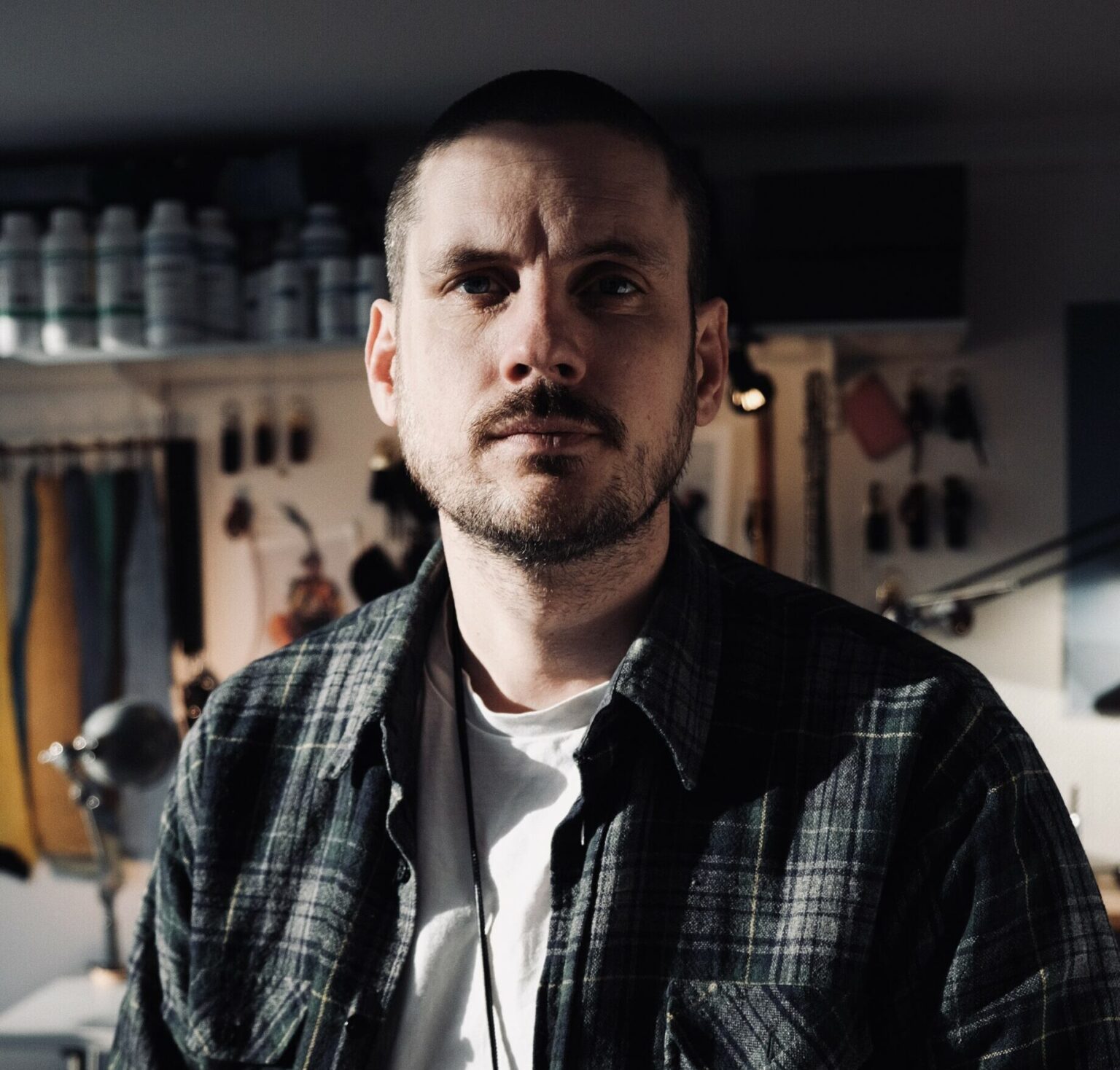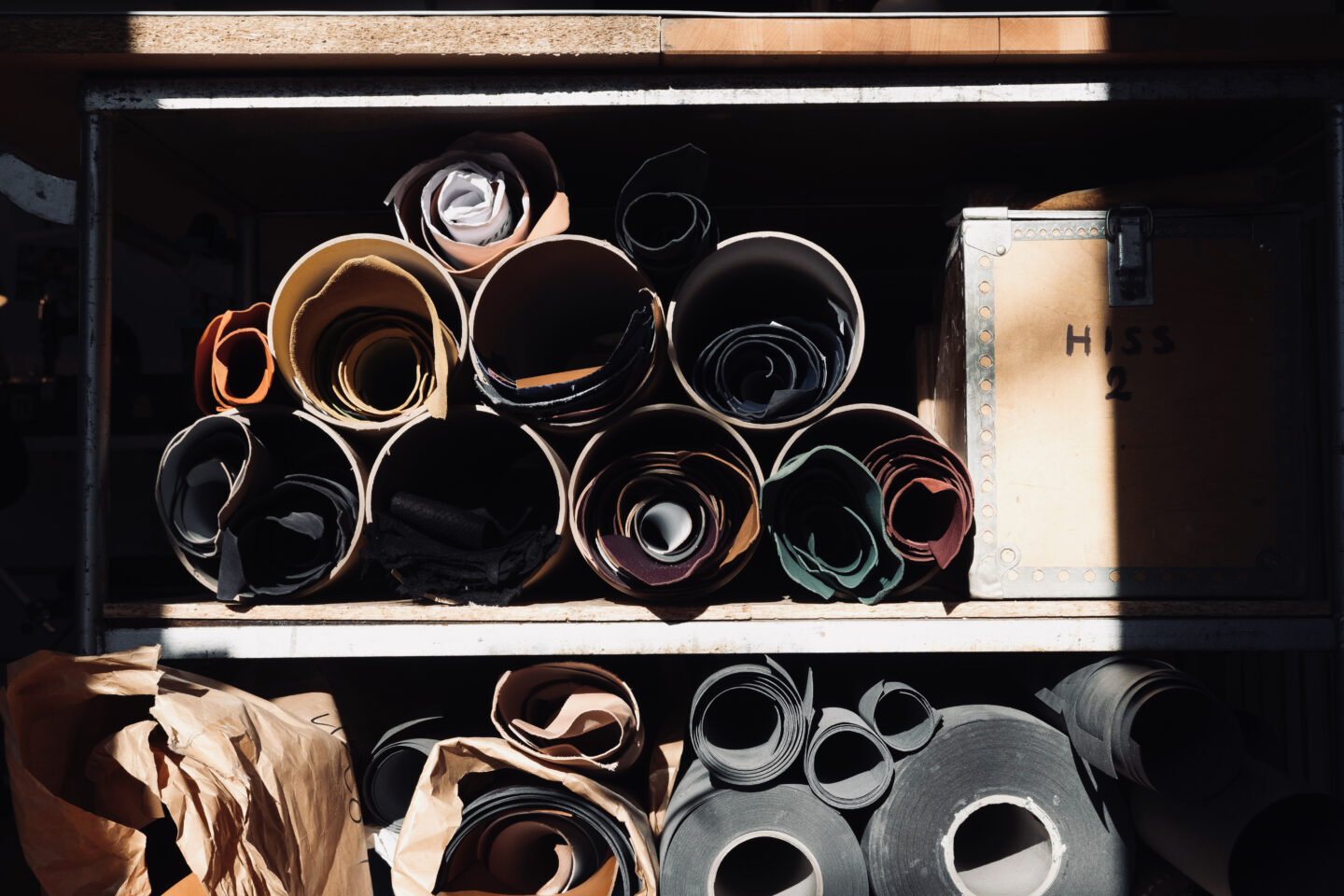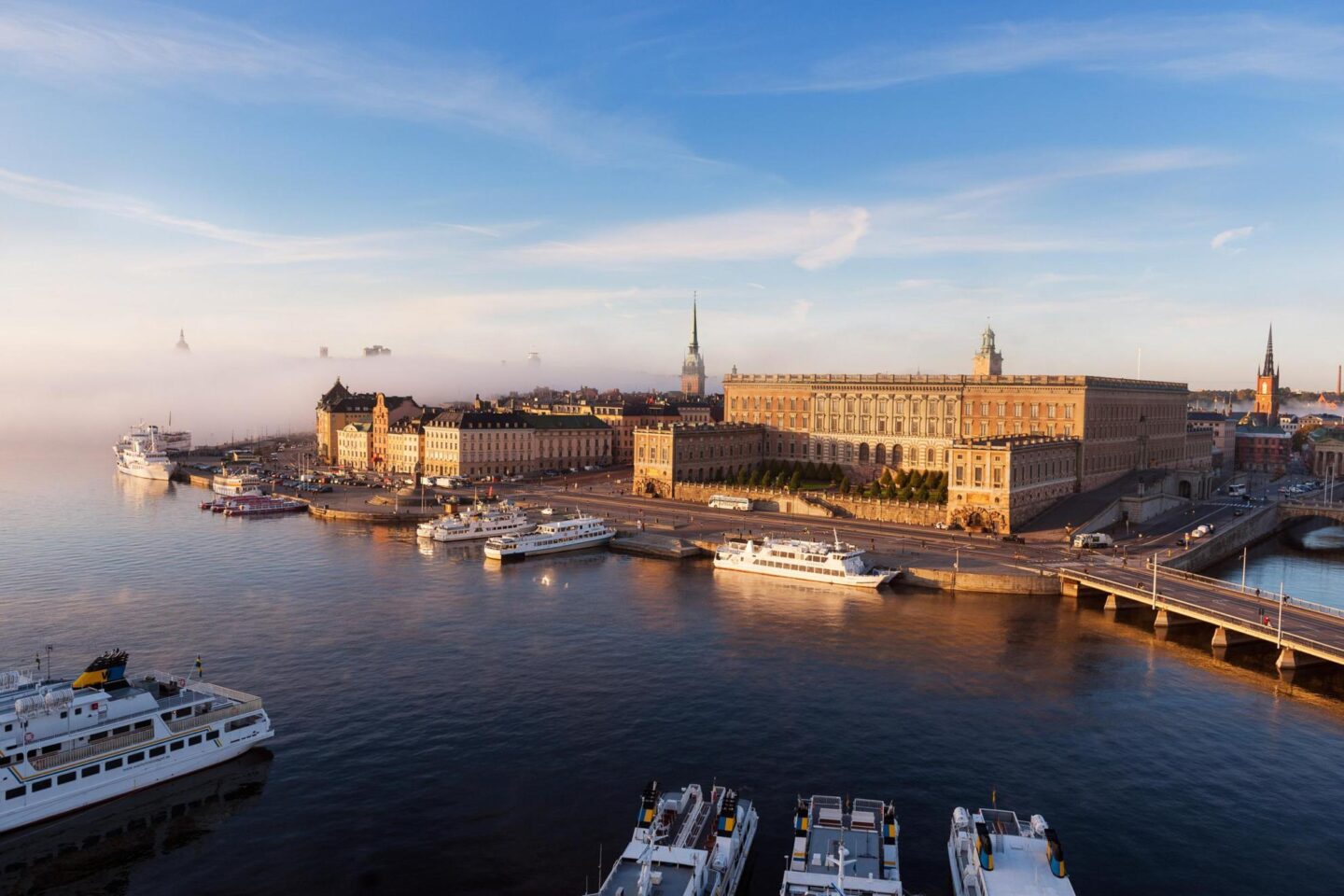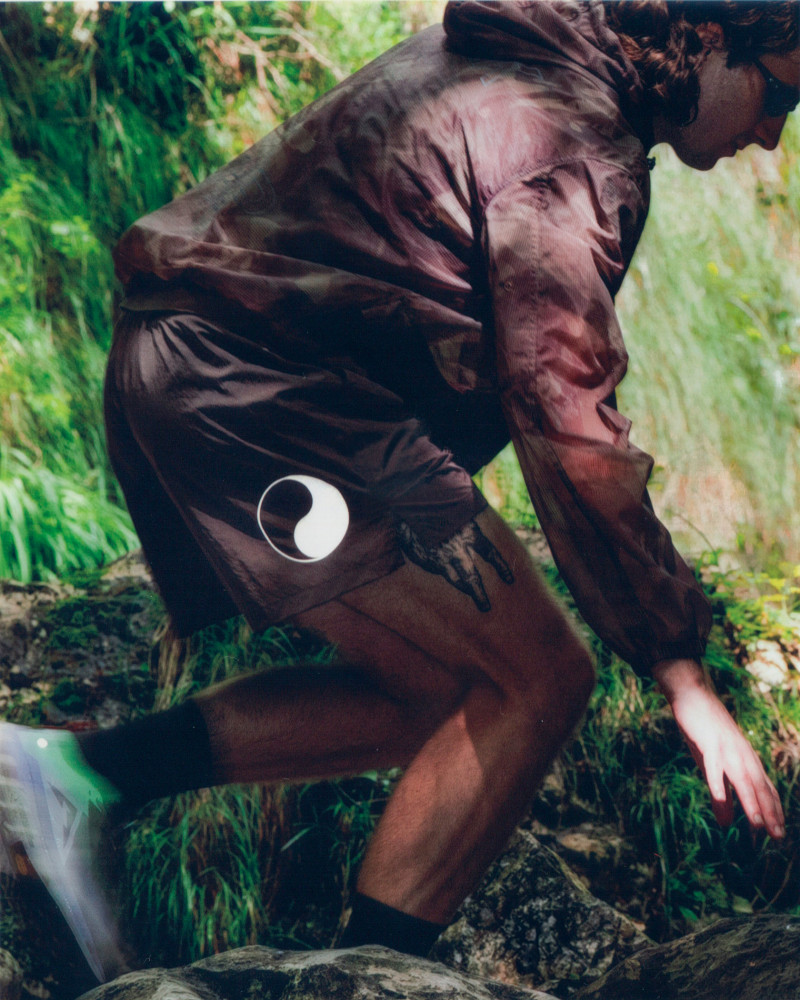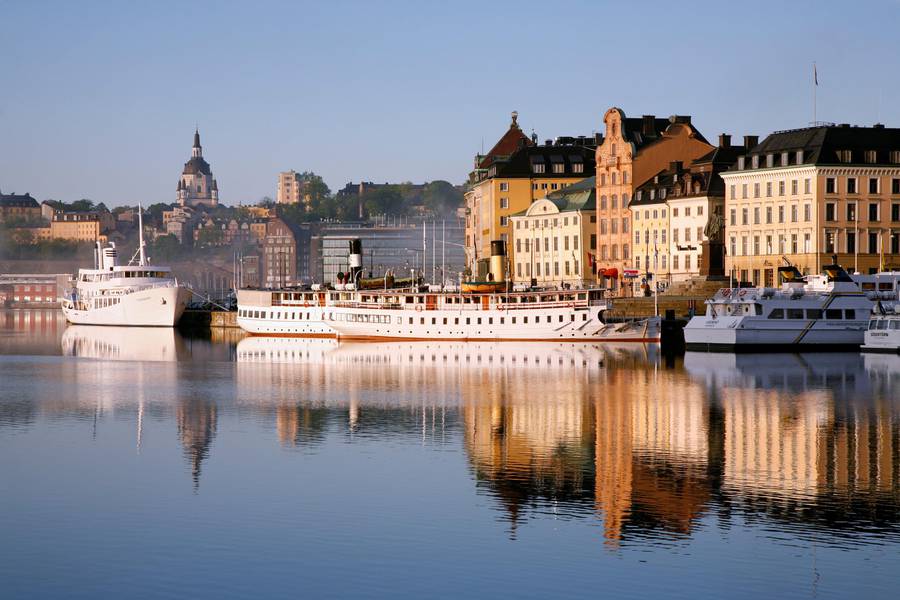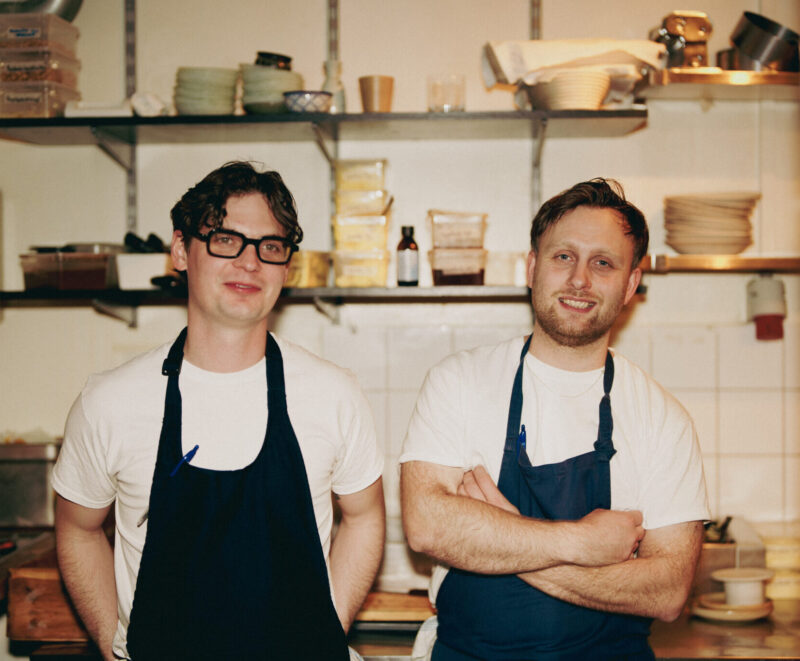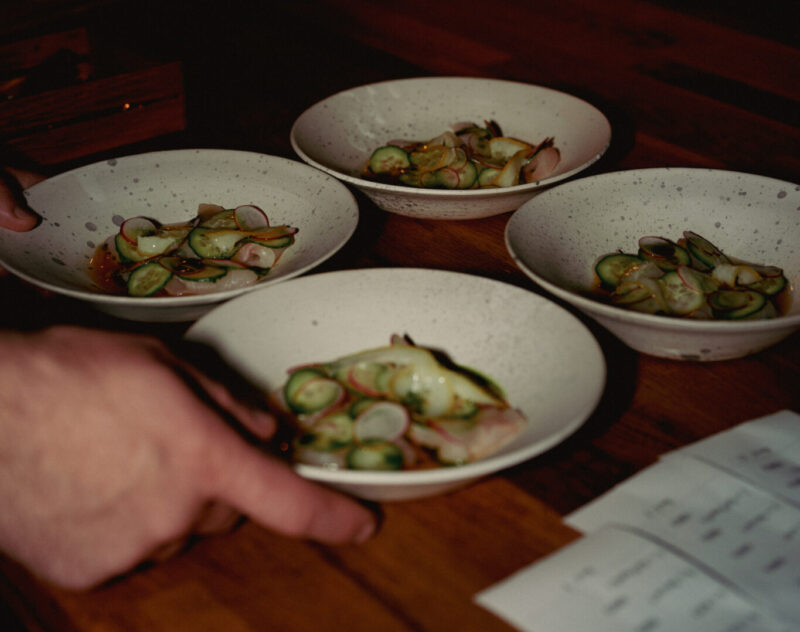Thanks to his proximity to the sea, Ankarstrand has easy access to his favourite material: salmon leather – a waste product of the Norwegian fishing industry. The leather, which comes from the North Sea and is tanned in Iceland, ends up in his studio in Stockholm, where Ankarstrand and his team of experienced artisans transform it into durable and sometimes colourful accessories. For him, using salmon leather is not only a good option for minimising waste – he also finds it aesthetically pleasing.
© Daniel Ankarstrand
Which place do you currently call home and where do you work on your projects?
I live in the northeastern corner of Vasastan. One of the central districts of Stockholm. Towards the end of the 19th century, Stockholm’s population experienced significant growth, leading to extreme overcrowding in the city. As a result, the northern outskirts of Stockholm were developed. Apartments were small and cramped to accommodate as many people as possible. This area was considered remote, and moving there could feel like an exile, hence the nickname “Sibirien” (Siberia). My studio is located on the other side of Vasastan, a 20-minute walk from where I live. I want to dedicate this text to the area around Sibirien, as it is a hidden gem that doesn’t often receive the attention it deserves.
Do you have a favorite place in your area where you like to relax and linger?
Just a few minutes walk from where I live is Carl Eldh‘s atelier, which today is a museum of his works. Carl Eldh was one of Sweden’s foremost sculptors during the first half of the 20th century, and his atelier houses many of his sketches and original plaster models. The garden is a work of art in itself, with its majestic rhododendron bushes and sculptures. The house has been treated with tar, so there’s a characteristic smell that hits you as you approach. To enter and sit in the garden, surrounded by lilac trees and rhododendron bushes, while getting to view this amazing atelier, brings a sense of calm to the body while also being incredibly inspiring. This is one of my favorite spots in Stockholm. If you continue walking a bit further along the bay, Brunnsviken, you’ll eventually come to Bergianska trädgården, which is Stockholm’s botanical garden. They have an incredible collection of plants and trees, as well as an orangery where you can enjoy a glass of wine and some simple food.
© Jeppe Wikström/Visit Stockholm
Are there any urgent political issues or problems in your region?
Fish leather in general and salmon leather in particular is an amazing material. The structure is both beautiful and long-lasting. Salmon leather is a byproduct of the fish industry. Sourced from fish farms in the Nordic Sea and tanned in Iceland. It makes me proud to work with an exotic leather that is Scandinavian all the way true. But the fishing industry itself has much to work on to achieve the sustainability goals we have set globally. And this is something that I have been engaged in for a long time. Fish leather is a fantastic material, and if we highlight these problems through the fashion industry, we can advocate and work for change in the fishing industry as well. We will continue to eat farmed fish. However, the legislation surrounding farmed salmon in open net pens at sea is harmful to both the fish and the environment, and there are many initiatives we can and should prioritize. I have brought together individuals and companies from the leather industry, the fishing industry, and the fashion industry to collaborate across the industry lines to phase out open net pen farming and instead use salmon that is farmed on land. It may sound contradictory, but this way we minimize the use of antibiotics, purify the water and eliminate the risk of fish escaping and disrupting the natural ecosystem of wild salmon.
In your opinion, what has developed well in the last 5 years – and what has not?
In the last five years, sustainability in fashion has seen significant growth in Sweden. The emergence of the deadstock, remake, and vintage movement reflects a positive shift towards more eco-conscious consumption habits. These trends promote the reuse of materials, reducing waste and environmental impact in the fashion industry. However, despite the strides made sustainably, challenges persist regarding consumer readiness. While interest in eco-friendly fashion is increasing, not all customers are fully prepared to embrace sustainable practices. Bridging this gap between sustainable fashion offerings and consumer preferences remains a key area for development.
Do you know a hidden gem when it comes to local manufacturers – whether it’s arts and crafts, sustainable products or food?
In Stockholm, there are some fantastic producers and craftsmen. Under the same roof, midway between my home and studio, are two of my favorite producers in the heart of Vasastan: Norrmalms Kartongfabrik and Nyström Stockholm.
Norrmalms Kartongfabrik (NKF) has been producing custom-made cardboard boxes and containers since 1916. Going down there and seeing these old cast iron machines is like catching a glimpse of a bygone era. But if you think it’s just about outdated craftsmanship, you’re mistaken. The level of craftsmanship is incredibly high, and they deliver their boxes all over the world. All of our boxes come from NKF. Nyström Stockholm is a micro-factory that produces leather bags and accessories. Several leather
craftsmen in Stockholm have turned to Nyström when they need advice and knowledge, as their experience in leather production is difficult to find today. For me, it has been incredibly important to have them close by, and they have been so generous with tips and tricks during my craft journey. If you have a fondness for craftsmanship, particularly glass craft, you must check out my childhood friend and incredibly skilled glassblower, Simon Klenell, and his hot glass studio Sthlm Glas is located within the historic Gustavsberg porcelain factory just outside central Stockholm. Established in 2017, the studio serves as a hub for numerous artists based in Stockholm who specialize in glasswork. This is definitely no hidden gem, but for me, Björn Frantzen‘s ambition and determination in creating Sweden’s first three-star restaurant, Frantzen, has been one of my major sources of inspiration regarding craftsmanship and storytelling. Overall, I’ve drawn inspiration from the world of gastronomy and fine dining. Chefs and restaurateurs in this realm are incredible visionaries with exceptional craftsmanship, and they have an incredible ability to blend these qualities, which is precisely what I’m trying to achieve with Kristian Eddé. In Frantzen’s prep kitchen, there’s a sign that reads ‘three-star responsibility,’ which is a motto I strive to uphold. Even seemingly simple or insignificant tasks require full dedication if one is to maintain the highest standard. Nothing should be overlooked.
© Norrmalms Kartongfabrik (NKF)
Do you have a secret restaurant tip that you would like to share with us?
I would like to highlight some restaurants in and around the area where I live that might not be the obvious destination for tourists but have an incredibly rich restaurant scene. For me as a dog owner, it’s crucial that I can bring my dachshund with me, so all the restaurants on the list are dog-friendly.
First up is Prospero on Roslagsgatan, a fine dining restaurant that builds its menu around seasonal ingredients and changes it regularly. They have high gastronomic ambitions but also want it to feel like coming home to a friend. I sharpen their kitchen knives in exchange for a restaurant visit now and then, so for me, it is like coming home to two friends. Balzac on Odengatan is one of my regular spots that always delivers a bustling and familiar atmosphere despite its slightly larger size. It’s a classic French bistro that is dog-friendly. But you have to arrive early as the dog tables cannot be booked. Lastly, we have Lennart and Bror on Birger Jarlsgatan, which is a butcher shop with a dining area. Here, I choose their delicious steak sandwich and a glass of prosecco. They’ve also opened a seafood restaurant Lennart och bror fisk is a few blocks away which is amazing. There, from Thursday to Sunday, they run a hip-hop club in the basement.
© Prospero Restaurant
Is there a local shop whose products are only available in your region?
Acne Studio and Our Legacy Workshop attract destination shoppers to the area where the Kristian Edde atelier is located. Known for their unique offerings and curated collections, these fashion hotspots attract travelers seeking one-of-a-kind pieces and innovative craftsmanship. To be nestled in this vibrant scene brings pure joy. On Torsgatan, you’ll find Acne Archive. Here you’ll discover a curated assortment of classics, show pieces, and exclusive items. I love being there and experiencing the limited edition collections that have been gone for a long time but suddenly can reappear in the shop, all at a discounted price. And just a few houses down the street from my atelier, you’ll find Our Legacy Workshop. A blend between a creative studio where designers work and a retailer of clothes and accessories. Here, I’ve enjoyed beer and street food, watched bands perform, and witnessed some of their fantastic collaborations being launched.
© Our Legacy Workshop
What are your 3 favourite apps that you use every day and couldn’t live without?
Spotify: Not much to say. Who can live without music?
Instagram: Being an early adopter of Instagram has been instrumental in building my following and establishing my presence on the platform. When I first joined, the community was still burgeoning, and
Instagram played an important role in connecting with like-minded individuals. Over time, as Instagram grew in popularity, my early presence allowed me to gain momentum and visibility, helping me to expand my reach and influence within the platform.
Splice: A video editing program that makes life easier for a content creator
Do you have any favorite newspapers or online magazines? And how do you keep up to date with politics or social and cultural issues?
I start every day with oatmeal and the local newspaper: Dagens Nyheter in print form. It might be the most luxurious thing I know.
Imagine you could be mayor for a year – what would you change?
I would reintroduce free admission to all state museums, which the current conservative government abolished. It was a fantastic opportunity for those who didn’t have the financial means to spend money on cultural experiences. I truly believe that culture plays an important role in building a more humane society.
© Ola Ericson/imagebank.sweden.se
One last question: if you could choose another place to live – regardless of financial or time constraints – which one would you choose?
One place that has been on my mind for many years is a small island off the Norwegian coast located exactly on the Arctic Circle named Træna. With only 500 residents, they still have a rich cultural life and unbelievably beautiful surroundings. I was supposed to go there as an artist in residence, but then COVID-19 hit and everything was put on hold. I’m obsessed with exotic places and animals that we have here in the north, and this place is just that. Some say Træna is the Nordic Hawaii with its clear, but rugged, white beaches and mind-blowing landscape. My favorite bird is the Atlantic puffin, which is only found in the northern hemisphere. Just a one-hour boat ride from Træna, there are about 200,000 puffins on the island of Lovund during the summer. They come every year in April to mate before heading out to sea again.
© Daniel Ankarstrand
